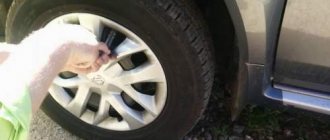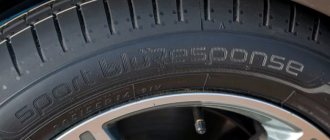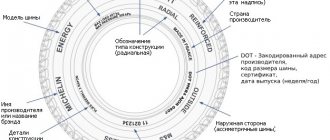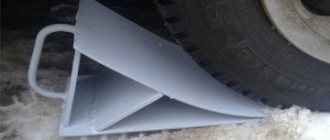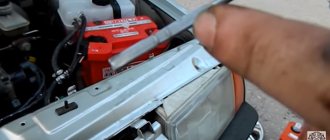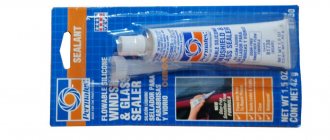What car are you the owner of? — Front-wheel drive, rear-wheel drive or all-wheel drive. Do you understand the mechanisms of a car, do you understand how its power and maneuverability on the road are justified, especially during descents and ascents? Often, the operation of cars takes place on a whim, only a part of the owners with their vehicle are on a first-name basis. An experienced and attentive driver clearly understands which part needs to be replaced as planned, whether it is necessary to rearrange the wheels, and what diagram is suitable for this. Not everyone, for example, can afford to allocate up to 20-30,000 rubles from the family budget twice a year to purchase a set of winter and summer tires. In order to save money, car owners are looking for acceptable solutions to the situation. And there may be several of them.
- “Once - yes much.” Some motorists think so and decide that it is better to buy expensive tires from a well-known brand, then you can count on quality, service, prestige and wear resistance of the product. Definitely the right decision. Firstly, premium tires are manufactured using innovative technologies, all high-level indicators are thought through, a quality stamp is given, and service life is extended. Secondly, expensive tires are a big responsibility. Of course, you can hope for their quality, and whether you can predict the road situation, whether you are able to find the ideal roadway without potholes or foreign sharp objects. There are no 100% safe roads, and any tire, be it economy class or premium, still does not last forever and is not insured against force majeure.
- “The sum does not change by changing the places of the terms.” A familiar rule from childhood. Among car owners, it is also used, only it is designated with a technical slant and sounds like this: rearranging the wheels on a car, the standard scheme is used.
- “A shirt worn to holes – still warm.” It’s practically a rag, but it’s a shame to throw it away. It may be a pity to part with your favorite clothes, but it is necessary if they no longer warm or decorate. But, of course, you can’t drive on bald tires! Unfortunately, in our society there are many reckless drivers who do not pay attention to the condition of the tires, they are not interested in rearranging the tires according to the scheme, they simply want to get to the goal in their car and are still happy that the car starts up every morning and does not refuse to carry passengers. And the fact that the braking distance has already exceeded all maximum indicators, that the car can sometimes drive, go into an uncontrolled skid - it doesn’t matter. Automobile
There may be several ways out of the situation, but let’s pay attention to the simplest and most popular one - rearranging the wheels; the process diagram has never been complicated, and even more so, several variations are attributed to it. Choose practically without restrictions!
When is a tire rotation recommended?
Service station employees recommend paying attention to the condition of the wheels, and if impressive numbers already appear on the dashboard indicating the mileage, and it is somewhere around 5,000-10,000 kilometers, then the rearrangement of the wheels is shown, the diagram is selected as desired. You should be extremely careful if you bought a used car second-hand, because then dashing craftsmen could twist the mileage figures, hiding the true wear and tear of the mechanical “stuff” of the car that was previously put up for sale. Then you should be guided by the condition of the tread pattern. We noticed wear on the front or rear wheels, assessed them as a percentage, and decided to rotate the tires according to the scheme. The following reasons for rearranging wheels are determined:
- Uneven tire wear.
- The need to strengthen one or another pair of wheels for front-wheel drive and rear-wheel drive vehicles, respectively.
- The desire to extend the life of tires, improve their condition by temporarily changing the load level.
- Unforeseen traffic situation, emergency repair work in the field.
Thus, there are no strict recommendations on when it is worth rotating the wheels; their condition is simply assessed, time is found for the replacement procedure, and money is allocated to pay for the work, if you do not do everything on your own.
How to swap wheels
Before changing wheels, it is important to choose a scheme for performing the operation. It is recommended to evaluate all the advantages and positive aspects of the process and predict possible shortcomings in advance.
It is important to understand that the work performed by the tires on the front wheels is significantly different from that assigned to the tires on the rear wheels. First of all, this is due to the level of load. A car with sporting parameters and characteristics usually wears out its tires more intensively.
If, as a result of periodic inspection, it is determined that the tires of all 4 wheels wear evenly, it is recommended to purchase a whole set and change the tires according to the selected wheel replacement scheme.
But before you start exploring different options, a little advice. Before removing the summer or winter set and performing a seasonal wheel rotation, it is recommended to first mark the tires (with chalk or water-based paint). This will help you figure out later which side and on which axis the tire was previously located.
Tire manufacturers recommend using the following symbols:
- PP (right anterior);
- PL (front left);
- ZP (rear right);
- LR (rear left).
What you need to rotate your tires
There are tools in the trunk of any car, many of which are useful for repair work. The idea is to rearrange the wheels on a car, the diagram is supposed to be available, then the following available tools will be needed:
- Jack. A model of a powerful floor hydraulic jack is suitable, with the help of which it will be possible to lift the car and fix it, perhaps for several hours, while the wheels rotate from one axle to another.
Jack - Stand. To enhance the power of the jack and securely fix the machine in weight, it is recommended to use a stand to the jack. It can be factory equipped or can be replaced with any other durable structure, for example, a cinder block or a log block.
Jack stand - Rearrangement scheme. Determine for yourself the best option so that rearranging tires according to the scheme is crowned with success and proves in practice its profitability and correctness.
When undertaking such a painstaking procedure on your own, try to enlist the support of friends or family. There is no doubt that you will need support and help. When repairing a car, there is always something to support, serve, smoke, take out, move, substitute, and so on. The list of actions can be endless!
Rearranging wheels - why is it necessary, how often should it be done
As tires are used, the tread wears out differently. Our grandfathers and fathers still knew about this, so in the era of Soviet shortages they tried to roll the wheels to the last. To do this, they regularly made interaxle rearrangements. They flipped the tires from one side to the other, changed the rear slopes to the front ones and vice versa.
The modern market offers a wide selection of tires of varying quality. But the high price of the product does not allow the average Russian to frequently change the “shoes” on his car. At the same time, you will lose free time and incur additional costs for tire service. But, routine wheel maintenance, including castling, can delay the purchase of new tires for 1-2 seasons and save you from unplanned expenses.
When to flip the wheels? Most cars undergo maintenance every 5-15 thousand kilometers (depending on the regulations). Cars have their oils and filters changed, fasteners tightened, and wheel alignment/camber angles checked. It is during this service period that experts recommend rotating the wheels on your car. During the castling process, the pressure should be checked and balancing done. Tread wear directly depends on these parameters.
Thus, the tires wear out evenly, after which they can be replaced as a whole set. This is another advantage. If previously owners threw out worn out 2 wheels and looked for the same replacement, now you can choose any set of tires.
Is it worth changing tires?
The opinions of motorists on the issue of changing wheels on a car differ in some places.
The first group claims that the procedure is useless and harms the tires. The second category constantly uses the procedure in the belief that this allows for maximum uniform tire wear. Both statements are true in their own way, but in individual cases. Tires on passenger cars need to be changed constantly. The requirement is due to the uneven load on different wheels and, as a result, different wear. The requirement is especially relevant for trucks. Here, when changing the shoes of the car and trailer, it is necessary to change the tires. The load of a tractor and a truck is very different.
The procedure is limited to vehicles equipped with a pressure control system. The control unit determines what side it is on, and if there is a puncture, it shows the driver the location of the puncture. If you mix up the disks, errors in the on-board system may occur.
Tire transfer is done according to a certain pattern. If you install your wheels incorrectly, the desired effect will not be achieved.
Wheel rotation frequency
The more often you rotate the wheels, the more evenly the tires will wear . But, since doing this too often is quite troublesome, experts advise changing the wheels during periodic maintenance - when the car is somehow lifted on a lift. As a rule, a mileage of 8-10 thousand km is quite enough for the next rotation of wheels: in this simple way you can not only extend the life of the tires , but also maintain the safety of movement at the proper level.
Rotating wheels using a spare wheel
This type of rotation allows you to extend the life of the wheels by about 20% , but in reality this method is almost never used: many modern cars either do not have a spare tire in the trunk at all, or use a small-sized “replacement tire” as one. And even if your car is equipped with a full-size spare tire, in practice it most often differs either in the tire model or the type of wheel. However, if the spare wheel is completely identical to the wheels installed on the car, then rotation in this case can be extremely useful. For ease of wheel replacement, the tread pattern type should be either asymmetrical non-directional or symmetrical non-directional. The rotation process in this case is no longer as obvious as in previous methods.
Method 1
The front right wheel is removed in place of the spare wheel, the spare wheel is installed in the place of the rear right wheel, the rear right wheel is installed in the place of the front left wheel, the front left wheel is installed in the place of the rear left wheel, the rear left wheel is installed in the place of the front right wheel.
Method 2
The spare wheel is installed in the place of the rear right wheel, the rear right wheel is installed in the place of the front right wheel, the front right wheel is installed in the place of the rear left wheel, the rear left wheel is installed in the place of the front left wheel, and the front left wheel, in turn, is removed in place of the spare wheel.
Follow these tips to keep your tires lasting longer and your car performing better.
Tires are the only connection between a car and the road. To extend their service life, rotate your tires.
Cars can be rear-wheel drive, like the BMW 5 Series and Mercedes C-Class, front-wheel drive, like the Toyota Prius, and all-wheel drive, mostly jeeps like the VW Touareg. If the car is front-wheel drive, the engine torque is transmitted to the wheels in the front, in rear-wheel drive to the rear wheels, and in all-wheel drive to both the front and rear at the same time. Depending on the car's drive - front, rear or all-wheel drive, tires will wear out at different rates. The main load falls on the drive wheels - they have more friction when starting the car and braking, which means they wear out faster. At the same time, the wheels in front also experience additional load from the weight of the engine and gearbox located in the front of the car.
By replacing tires, their wear is leveled out and their service life is extended. It is recommended to change them every 5,000 – 8,000 kilometers, or at least every time the oil in the car’s engine is changed. If the vehicle is driven only on weekends, rotate the tires at least once every six months.
First, remove the wheels and make sure that they are not worn to holes, there are no bumps or damage. Check whether the wheel rims are deformed from strong impacts when hitting a pothole on the asphalt. Most often, deformation occurs on the inside of the rim. Driving fast on a bad road can cause the disc to become ovoid in shape - you won’t notice it with the naked eye. Bent rims cannot be balanced, so ask to have the wheels balanced when replacing them at a tire shop; if the rim is bent, the technician will report this and offer to align the rims for an additional fee.
Types of tire wear
When inspecting the tires, uneven wear may be observed, i.e.
uneven wear of the tread in different places (see picture). This is more common in older vehicles with suspension systems that wear out and require repairs, frequent aggressive braking, and misaligned wheels. The tire doesn't face straight, so the tread wears unevenly, which affects the vehicle's steering and braking ability. If the tread is worn unevenly on the inside or outside, the car probably needs an alignment. Read how to do it yourself here. It is recommended to check the wheel alignment every 30 thousand kilometers. A wavy sidewall - a hernia on the side of a tire - can occur as a result of falling into a deep hole. The tire gets pinched, a rupture occurs inside and air gets into the layers of rubber, resulting in a bump coming out. If left unattended, a tire herniation can lead to a tire puncture or sudden deflation, resulting in loss of control and an accident.
How to swap tires
There are three options for swapping tires. They are only suitable for vehicles with the same size wheels and the same season. Tires should not be unidirectional, that is, not those that are placed in a certain direction indicated by the manufacturer on the sidewall, based on the tread pattern. If you install a unidirectional tire incorrectly and it rotates in the opposite direction, this will lead to rapid wear and damage to the vehicle's ride.
Replacement scheme for front-wheel drive cars: the front tires are placed back on the same side, and the rear tires in the opposite front corner, for example, the right rear tire is placed in place of the left front.
Replacement scheme for rear-wheel drive vehicles: the rear tires are placed forward on the same side, and the front tires are placed in the opposite rear corner, for example, the right front tire is placed in place of the left rear.
Replacement scheme for an all-wheel drive vehicle: cross all four tires - right front to left rear, left front to right rear, left rear to right front and right rear to left front.
A car with all-wheel drive doesn't mean the tires don't need to be swapped. There is a misconception that on all-wheel drive vehicles the tread wears out evenly. It is not true. All-wheel drive systems do not always drive all wheels. Electronically controlled transfer cases and differentials can shift power between the front and rear wheels, depending on road conditions and the driver's selected drive mode. The difference in vehicle weight between the front and rear also affects tire wear.
Let us separately dwell on the rule of swapping tires of different sizes (for example, in tuned versions of the BMW 5 Series, the rear tires are placed wider than the front) and unidirectional tires, which should rotate only in a certain direction. If the wheels are different sizes, then you need to change them from right to left, and left to right. If the wheels are unidirectional, then replacing a cross with a cross is out of the question. Unidirectional tires change from right rear to right front, and left rear to left front.
When replacing tires in places, if you do it yourself, when tightening the mounting bolts, use a torque wrench so as not to “overtighten the bolt” or, God forbid, “not to tighten.” The approximate tightening range is 80-140 Nm, depending on the car model. Look for the required tightening torque in the user manual.
If in doubt about the correct direction of tire rotation, check your owner's manual, dealership, or talk to an expert who is familiar with the vehicle. Try to rotate your tires at least once a season - this will help your tires last longer and save money.
Source: zap-online.ru
Scheme for rearranging wheels on a car
On front-wheel drive vehicles, the rearrangement is carried out crosswise in the direction of the front axle or in a cross pattern. On four-wheel drive vehicles, the rotation is carried out in a criss-cross pattern - the tires are swapped diagonally.
The procedure for rearranging wheels when you have a spare wheel changes slightly. A spare wheel helps distribute tread wear more evenly, and also protects the driver in case of a tire puncture or wheel rim damage.
The scheme for rearranging wheels on a passenger car with an additional wheel is as follows:
The spare wheel is installed instead of the right rear wheel, the left front one is installed instead of the spare one, the left rear one is replaced by the front one, the right rear wheel is installed instead of the left front one.
Asymmetrical non-directional tread pattern
The most popular type of tread on civilian tires at the moment is asymmetrical . This, for example, is the case with most models of the MICHELIN summer line, ranging from the economical Energy Saver to the sporty Pilot Super Sport. When installing asymmetrical tires on rims, it is necessary to align the front side of the tire with the front side of the rim : for this purpose, the outside and inside inscriptions are present on the sidewalls (the outer and inner side of the tire) and there is no rotation direction arrow. The convenience of this type of tread is that the wheel assembly can be changed between each other in any way: the outer side of the tire will remain external in any case . In this case, it is appropriate to use any of the rotation methods. Usually the most suitable method for rearranging wheels is indicated in the car's operating instructions, but if you don't have one on hand, you can choose one of the methods we suggest.
Method 1
The front left wheel changes with the rear right one, and the front right wheel changes with the rear left one. This type of replacement is suitable for any type of vehicle drive and is most preferable for all-wheel drive vehicles.
Method 2
The rear wheels are moved to the front axle (the right rear wheel is placed in place of the right front one, the left rear wheel is placed in place of the left front one), while the front wheels are installed in place of the rear ones diagonally (the right front wheel is placed in place of the left rear one, the left front wheel is placed in place of the front axle). right rear seat). This method is suitable for cars with rear-wheel drive and all-wheel drive.
Method 3
The front wheels are installed in place of the rear ones (the right front wheel is in place of the right rear wheel, the left front wheel is in place of the left rear wheel), and the rear wheels, in turn, are moved diagonally to the front axle (the right rear wheel is placed in place of the left front wheel, the left rear - in place of the right front). This method is intended for cars with front-wheel drive.
Why is it necessary to change the tires on your car?
A set of tires purchased new can last up to 80,000 kilometers on your car or even more.
It is clear that for such a mileage, the rubber needs to create ideal operating conditions. But you can easily extend their service life to 30,000-40,000 km, just follow simple rules for tire rotation. Of course, how long tires can be used safely depends on many factors. The class of the vehicle, your driving style, the type of tires used and the general technical condition of the car are of great importance. It is clear that you cannot compare the service life of tires for a slow-moving summer resident who leaves the garage a couple of times a year, and for a street racer who wastes smoke from under his wheels. The degree of wear of suspension elements such as ball joints, bushings, shock absorbers, correctly adjusted wheel alignment, and tire pressure levels are also important.
In addition, there is another way to extend the life of your tires - periodically change the wheels. Recently, for some reason, they have forgotten about it, although in earlier times it was an immutable rule.
The fact is that different forces act on different wheels, and this naturally leads to significant differences in wear. For example, the front tires bear most of the weight of the car due to the fact that the vast majority of cars have a heavy engine there. In addition, they account for up to 80% of the weight during emergency braking. Finally, when turning, the drive wheels turn, which also leads to rapid and uneven wear.
If the front tires wear out the tread edges the fastest, the rear tires wear out the middle part. Rearranging the shoes from back to front and, accordingly, vice versa, will allow the rear tires to wear off on the sidewalls, and the front tires to wear down on the plane. This extends the service life of the kit and reduces noise and vibration.
Of course, if you have extra money, you can simply change the front tires after they wear out, since this will have to be done twice as often as with the rear ones. Thus, you will have to buy six tires instead of four. But it is much easier to arrange a rotation for them, extending their service life by one and a half times.
8739
8739
Why do the wheels change places?
Almost all tire specialists recommend changing the sides of the tires on your car quite regularly. Can increase the life of a particular tire by up to 20%. This is achieved with the correct use of such a solution.
The driver should understand why such a change is needed. First, let's look at the technical features of a passenger car. Each wheel is at a certain angle to the surface. As a result, a problem arises with uneven load on individual sections of the tire, and each of the four wheels will have its own problem points. By rearranging the tires between each other, this feature can be partially mitigated.
It is necessary to understand when the wheels may need to be rotated; the standard recommendation depends on the operating characteristics of the vehicle. If the car is used on a bad road, the driver prefers a sporty driving style, it is worth rearranging every 10 thousand kilometers. In the case when the tires are used in a quiet mode, on smooth asphalt you should wait up to 15-20 thousand kilometers.
